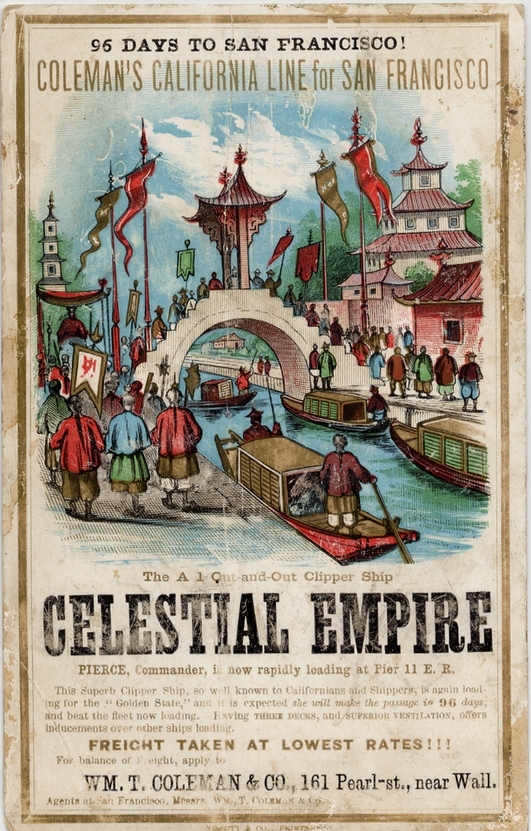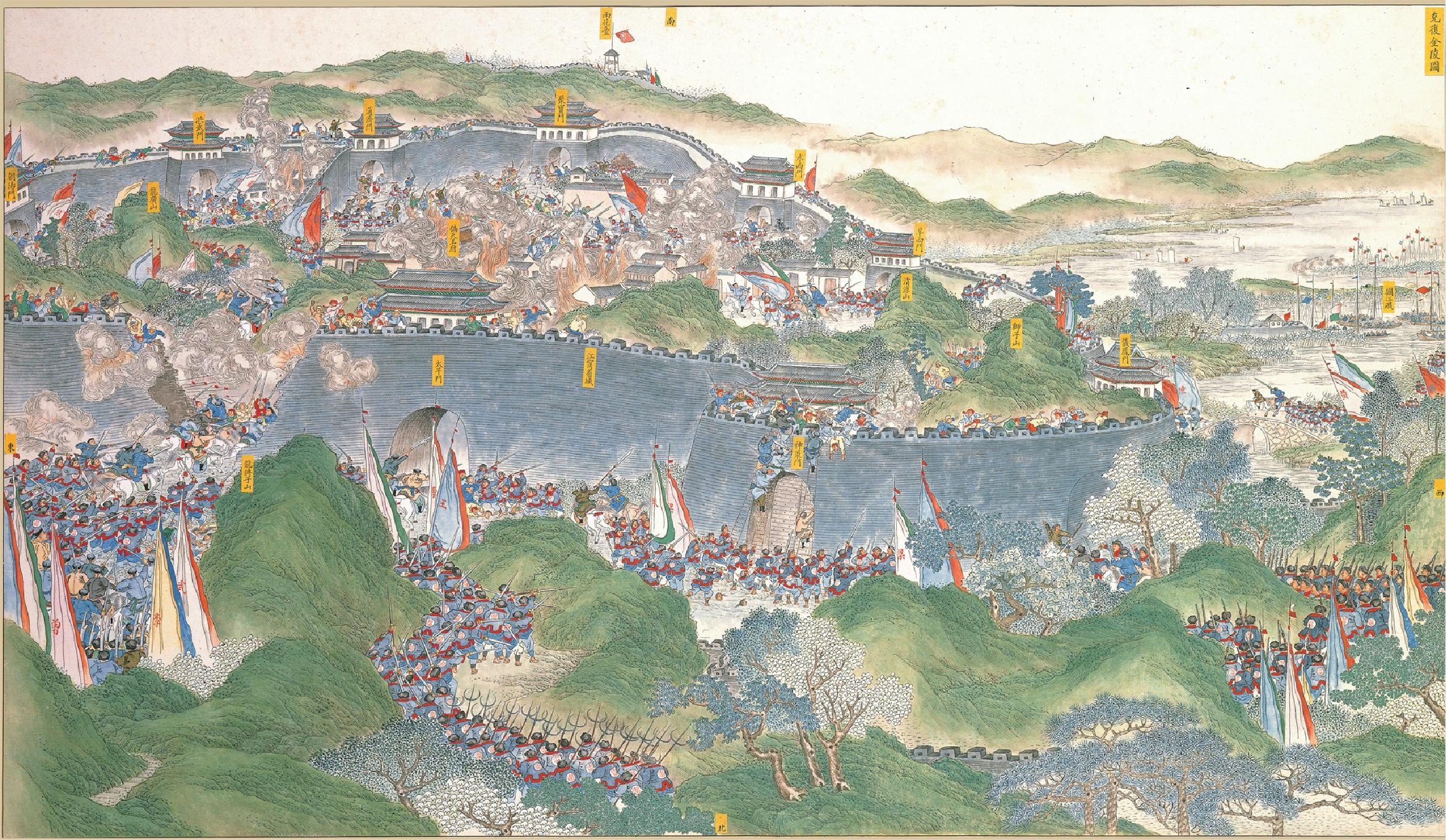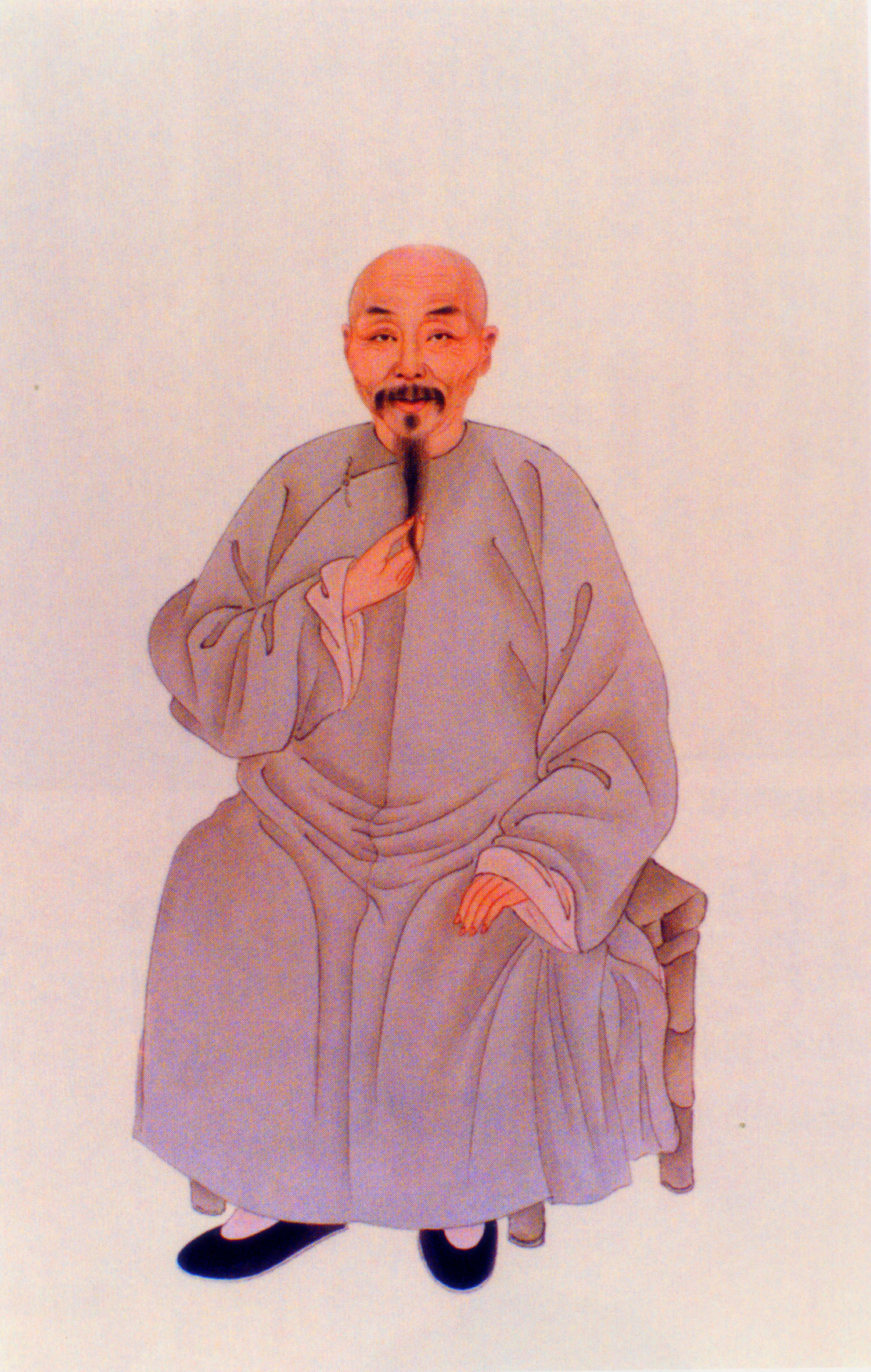|
Celestial Empire
Celestial Empire (; "heavenly dynasty") is an old name used to refer to China, from a literary and poetic translation of the Chinese term ''Tianchao'', one of many names for China. Accordingly, in the 19th century, the name "Celestial" was used to refer to Chinese emigrants to the United States, Canada, and Australia. Both terms were widely used in the English-language popular mass media of the day,"The Wyoming Massacre" ''New York Times''; 6 September 1885; pg. 7, ProQuest Historical Newspapers The ''New York Times'' Retrieved 12 March 2007."The Chinese Massacre," ''The National Police Gazette'', September 19, 1885, no. 418, pg 6. but fell into disuse later on. Its usage has become popular again in the present day (2015), particularly among [...More Info...] [...Related Items...] OR: [Wikipedia] [Google] [Baidu] |
Dynasties In Chinese History
Dynasties in Chinese history, or Chinese dynasties, were hereditary monarchical regimes that ruled over China during much of its history. From the legendary inauguration of dynastic rule by Yu the Great circa 2070 BC to the abdication of the Xuantong Emperor on 12 February 1912 in the wake of the Xinhai Revolution, China was ruled by a series of successive dynasties. Dynasties of China were not limited to those established by ethnic Han—the dominant Chinese ethnic group—and its predecessor, the Huaxia tribal confederation, but also included those founded by non-Han peoples. Dividing Chinese history into periods ruled by dynasties is a convenient method of periodization. Accordingly, a dynasty may be used to delimit the era during which a family reigned, as well as to describe events, trends, personalities, artistic compositions, and artifacts of that period. For example, porcelain made during the Ming dynasty may be referred to as "Ming porcelain". The word "dyn ... [...More Info...] [...Related Items...] OR: [Wikipedia] [Google] [Baidu] |
Li Hongzhang
Li Hongzhang, Marquess Suyi ( zh, t=李鴻章; also Li Hung-chang; 15 February 1823 – 7 November 1901) was a Chinese politician, general and diplomat of the late Qing dynasty. He quelled several major rebellions and served in important positions in the Qing imperial court, including the Viceroy of Zhili, Viceroy of Huguang, Huguang and Viceroy of Liangguang, Liangguang. Although he was best known in the West for his generally pro-modern stance and importance as a negotiator, Li antagonised the British with his support of Russia as a foil against Japanese expansionism in Manchuria and fell from favour with the Chinese after their defeat in the First Sino-Japanese War. His image in China remains controversial, with criticism on one hand for political and military defeats and praise on the other for his success against the Taiping Rebellion, his diplomatic skills defending Chinese interests in the era of unequal treaties, and his role pioneering China's Kaiping Tramway, in ... [...More Info...] [...Related Items...] OR: [Wikipedia] [Google] [Baidu] |
Manchuria
Manchuria is an exonym (derived from the endo demonym "Manchu") for a historical and geographic region in Northeast Asia encompassing the entirety of present-day Northeast China (Inner Manchuria) and parts of the Russian Far East ( Outer Manchuria). Its meaning may vary depending on the context: * Historical polities and geographical regions usually referred to as Manchuria: ** The Later Jin (1616–1636), the Manchu-led dynasty which renamed itself from "Jin" to "Qing", and the ethnicity from "Jurchen" to "Manchu" in 1636 ** the subsequent duration of the Qing dynasty prior to its conquest of China proper (1644) ** the northeastern region of Qing dynasty China, the homeland of Manchus, known as "Guandong" or "Guanwai" during the Qing dynasty ** The region of Northeast Asia that served as the historical homeland of the Jurchens and later their descendants Manchus ***Qing control of Dauria (the region north of the Amur River, but in its watershed) was contested in 1643 ... [...More Info...] [...Related Items...] OR: [Wikipedia] [Google] [Baidu] |
Manchu People
The Manchus (; ) are a Tungusic East Asian ethnic group native to Manchuria in Northeast Asia. They are an officially recognized ethnic minority in China and the people from whom Manchuria derives its name. The Later Jin (1616–1636) and Qing (1636–1912) dynasties of China were established and ruled by the Manchus, who are descended from the Jurchen people who earlier established the Jin dynasty (1115–1234) in northern China. Manchus form the largest branch of the Tungusic peoples and are distributed throughout China, forming the fourth largest ethnic group in the country. They can be found in 31 Chinese provincial regions. Among them, Liaoning has the largest population and Hebei, Heilongjiang, Jilin, Inner Mongolia and Beijing have over 100,000 Manchu residents. About half of the population live in Liaoning and one-fifth in Hebei. There are a number of Manchu autonomous counties in China, such as Xinbin, Xiuyan, Qinglong, Fengning, Yitong, Qingyuan, Weicha ... [...More Info...] [...Related Items...] OR: [Wikipedia] [Google] [Baidu] |
Yellow River
The Yellow River or Huang He (Chinese: , Mandarin: ''Huáng hé'' ) is the second-longest river in China, after the Yangtze River, and the sixth-longest river system in the world at the estimated length of . Originating in the Bayan Har Mountains in Qinghai province of Western China, it flows through nine provinces, and it empties into the Bohai Sea near the city of Dongying in Shandong province. The Yellow River basin has an east–west extent of about and a north–south extent of about . Its total drainage area is about . The Yellow River's basin was the birthplace of ancient Chinese, and, by extension, Far Eastern civilization, and it was the most prosperous region in early Chinese history. There are frequent devastating floods and course changes produced by the continual elevation of the river bed, sometimes above the level of its surrounding farm fields. Etymology Early Chinese literature including the '' Yu Gong'' or ''Tribute of Yu'' dating to the ... [...More Info...] [...Related Items...] OR: [Wikipedia] [Google] [Baidu] |
Zhou Dynasty
The Zhou dynasty ( ; Old Chinese ( B&S): *''tiw'') was a royal dynasty of China that followed the Shang dynasty. Having lasted 789 years, the Zhou dynasty was the longest dynastic regime in Chinese history. The military control of China by the royal house, surnamed Ji, lasted initially from 1046 until 771 BC for a period known as the Western Zhou, and the political sphere of influence it created continued well into the Eastern Zhou period for another 500 years. The establishment date of 1046 BC is supported by the Xia–Shang–Zhou Chronology Project and David Pankenier, but David Nivison and Edward L. Shaughnessy date the establishment to 1045 BC. During the Zhou dynasty, centralized power decreased throughout the Spring and Autumn period until the Warring States period in the last two centuries of the dynasty. In the latter period, the Zhou court had little control over its constituent states that were at war with each other until the Qin state consolidated power ... [...More Info...] [...Related Items...] OR: [Wikipedia] [Google] [Baidu] |
Three Kingdoms
The Three Kingdoms () from 220 to 280 AD was the tripartite division of China among the dynastic states of Cao Wei, Shu Han, and Eastern Wu. The Three Kingdoms period was preceded by the Han dynasty#Eastern Han, Eastern Han dynasty and was followed by the Jin dynasty (266–420), Western Jin dynasty. The short-lived state of Yan (Three Kingdoms), Yan on the Liaodong Peninsula, which lasted from 237 to 238, is sometimes considered as a "4th kingdom". Academically, the period of the Three Kingdoms refers to the period between the establishment of Cao Wei in 220 and the Conquest of Wu by Jin, conquest of the Eastern Wu by the Western Jin in 280. The earlier, "unofficial" part of the period, from 184 to 220, was marked by chaotic infighting between warlords in various parts of China during the end of the Han dynasty, downfall of the Eastern Han dynasty. The middle part of the period, from 220 to 263, was marked by a more militarily stable arrangement between three rival states ... [...More Info...] [...Related Items...] OR: [Wikipedia] [Google] [Baidu] |
Warring States Period
The Warring States period () was an era in ancient Chinese history characterized by warfare, as well as bureaucratic and military reforms and consolidation. It followed the Spring and Autumn period and concluded with the Qin wars of conquest that saw the annexation of all other contender states, which ultimately led to the Qin state's victory in 221 BC as the first unified Chinese empire, known as the Qin dynasty. Although different scholars point toward different dates ranging from 481 BC to 403 BC as the true beginning of the Warring States, Sima Qian's choice of 475 BC is the most often cited. The Warring States era also overlaps with the second half of the Eastern Zhou dynasty, though the Chinese sovereign, known as the king of Zhou, ruled merely as a figurehead and served as a backdrop against the machinations of the warring states. The "Warring States Period" derives its name from the '' Record of the Warring States'', a work compiled early in the Han dynasty. Ge ... [...More Info...] [...Related Items...] OR: [Wikipedia] [Google] [Baidu] |
Huai Army
The Huai Army (), named for the Huai River, was a military force allied with the Qing dynasty raised to contain the Taiping Rebellion in 1862. It was also called the Anhui Army because it was based in Anhui province. It helped to restore the stability of the Qing dynasty. Unlike the traditional Green Standard Army or Eight Banners forces of the Qing, the Huai Army was largely a militia army, based on personal rather than institutional loyalties. It was armed with a mixture of traditional and modern weapons. Li Hongzhang, a commander in the Xiang Army, created the Huai Army in October 1861. It succeeded Zeng Guofan’s Xiang Army. The Huai Army itself was succeeded by the New Army and the Beiyang Army, which were created in the late 19th century. Founding Before recovering Anqing in late 1861, Zeng Guofan ordered his student Li Hongzhang to bring some of the Xiang Army back to Anhui, Li's homeland, for military service and to organize an independent force under Li Hongzhang's comma ... [...More Info...] [...Related Items...] OR: [Wikipedia] [Google] [Baidu] |
Xiang Army
150px, Zeng Guofan, the leader of the Xiang Army The Xiang Army or Hunan Army () was a standing army organized by Zeng Guofan from existing regional and village militia forces called '' tuanlian'' to contain the Taiping Rebellion in Qing China (1850 to 1864). The name is taken from the Hunan region where the Army was raised. The Army was financed through local nobles and gentry, as opposed to through the centralized Manchu-led Qing dynasty. The army was mostly disbanded by Zeng after the re-capture of the Taiping capital at Nanking. Although it was raised specifically to address problems in Hunan, the Army formed the core of the new Qing military establishment, and as such, forever weakened the Manchu influence within the military (eight banners). This devolution of centralized command is commonly pointed to as a major reason for the eventual downfall of the Qing and the emergence of regional warlordism in China during the first half of the twentieth century. The Xiang Army w ... [...More Info...] [...Related Items...] OR: [Wikipedia] [Google] [Baidu] |
Military Of The Qing Dynasty
The Qing dynasty (1636–1912) was established by conquest and maintained by armed force. The founding emperors personally organized and led the armies, and the continued cultural and political legitimacy of the dynasty depended on the ability to defend the country from invasion and expand its territory. Therefore, military institutions, leadership, and finance were fundamental to the dynasty's initial success and ultimate decay. The early military system centered on the Eight Banners, a hybrid institution that also played social, economic, and political roles. The Banner system was developed on an informal basis as early as 1601, and formally established in 1615 by Jurchen leader Nurhaci (1559–1626), the retrospectively recognized founder of the Qing. His son Hong Taiji (1592–1643), who renamed the Jurchens "Manchus," created eight Mongol banners to mirror the Manchu ones and eight "Han-martial" () banners manned by Chinese who surrendered to the Qing before the full-fledged ... [...More Info...] [...Related Items...] OR: [Wikipedia] [Google] [Baidu] |
Self-Strengthening Movement
The Self-Strengthening Movement, also known as the Westernization or Western Affairs Movement (–1895), was a period of radical institutional reforms initiated in China during the late Qing dynasty following the military disasters of the Opium Wars. The British and French burning of the Old Summer Palace in 1860 as Taiping rebel armies marched north, forced the imperial court to acknowledge the crisis. Prince Gong was made regent, Grand Councilor, and head of the newly formed Zongli Yamen (a ''de facto'' foreign affairs ministry). Local Han Chinese officials such as Zeng Guofan established private westernized militias in prosecuting the war against the rebels. Zeng and his armies eventually defeated the rebels and prosecuted efforts to import Western military technology and to translate Western scientific knowledge. They established successful arsenals, schools, and munitions factories. In the 1870s and 1880s, their successors used their positions as provincial officials to b ... [...More Info...] [...Related Items...] OR: [Wikipedia] [Google] [Baidu] |











